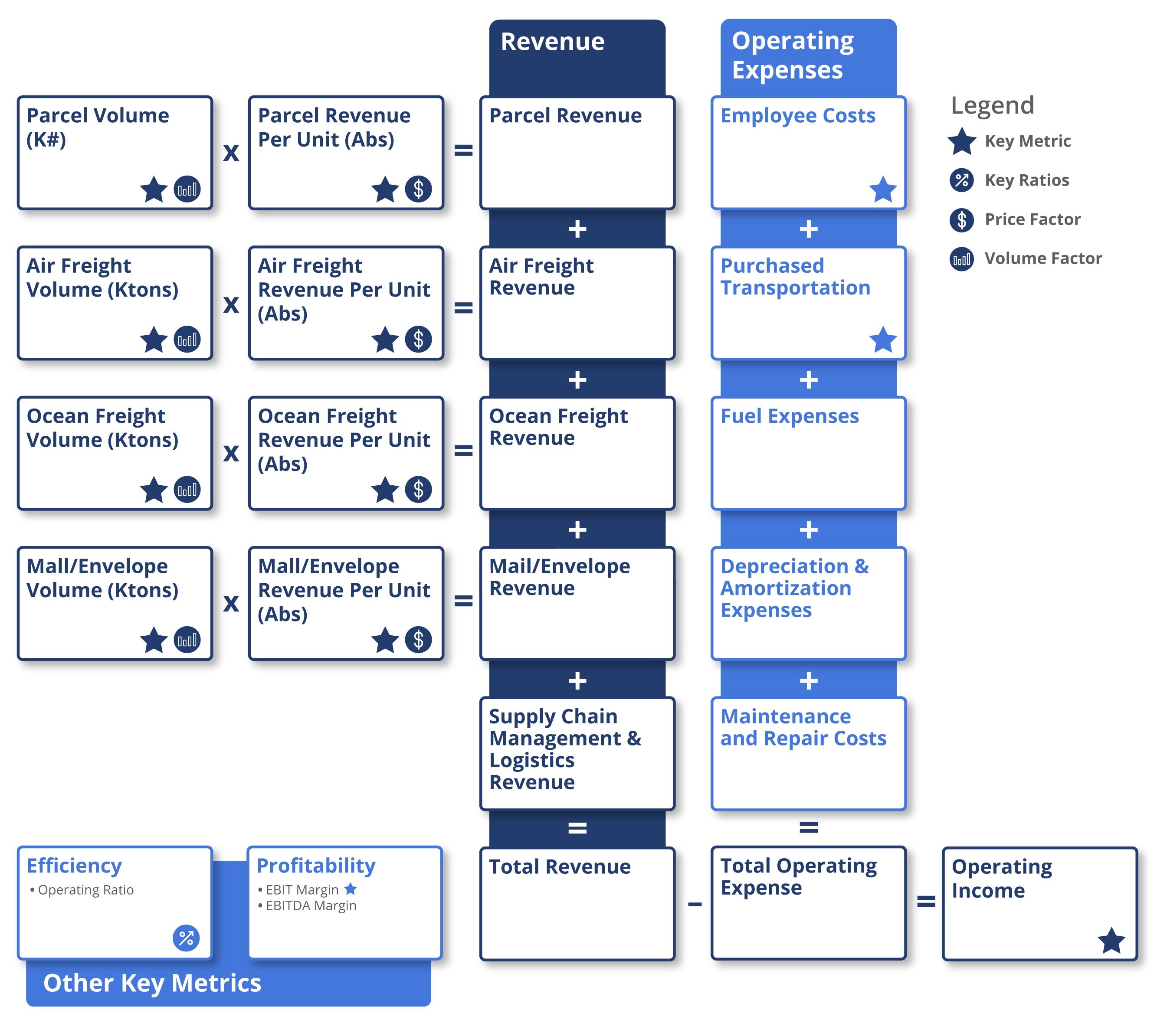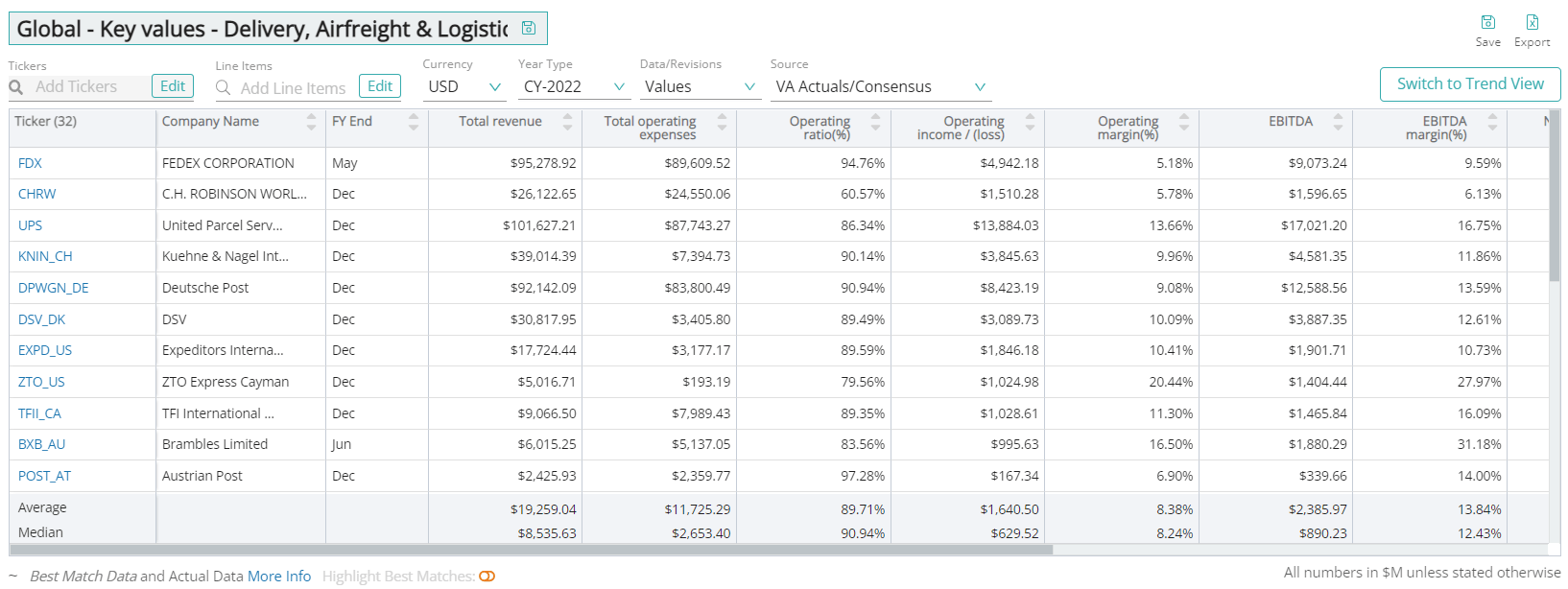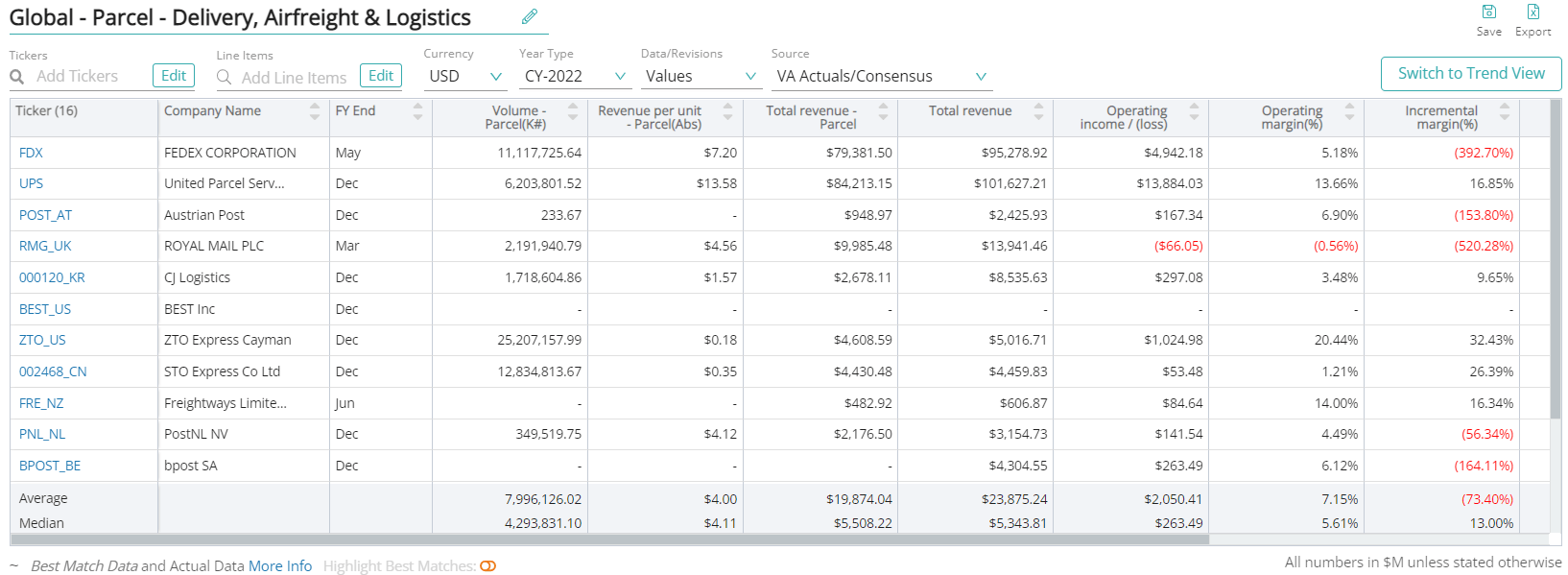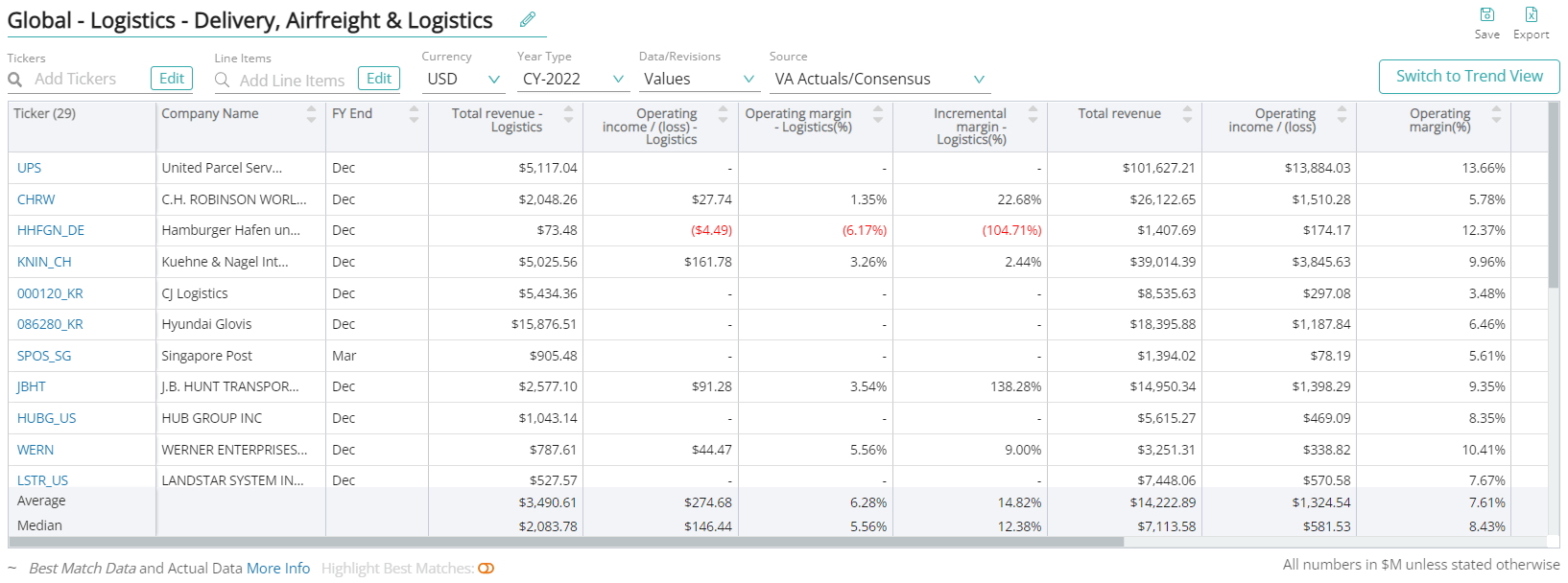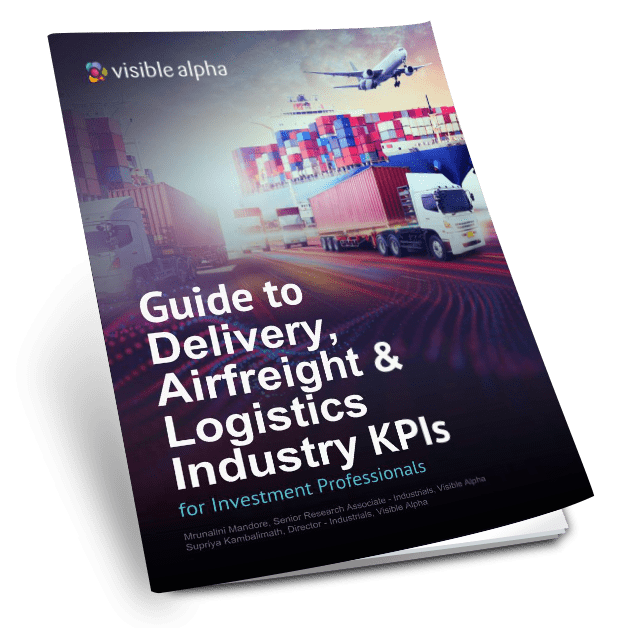Volume is the number of parcels delivered throughout a given period. On our platform, we break this out by segments including Volume – Parcel, Volume -Mail/Envelope, Volume – Ocean Freight, and Volume – Air Freight, defined as the number of parcels delivered through different means in a given period.
Key performance indicators (KPIs) are the most important business metrics for a particular industry. When understanding market expectations for the Delivery, Airfreight, and Logistics industry, whether at a company or industry level, some industry KPIs to consider are:
Visible Alpha’s Standardized Industry Metrics
To understand market expectations for the Delivery, Airfreight, and Logistics industry, a key information source is sell-side analyst estimates and consensus forecast data. The buy-side, sell-side, and public companies leverage this type of data to conduct competitive analysis, a type of analysis conducted by professional analysts that involves comparing standardized metrics of one company with those of similar companies. Because companies report metrics differently – and sometimes on different metrics altogether – standardizing the key metrics for each company can be a cumbersome process.
Visible Alpha Insights includes analyst data, company data, and industry data at a level of granularity unparalleled in the market. Our industry data – Standardized Industry Metrics – enables market participants to quantify and compare market expectations for companies across 150+ industries.
Data as of January 2023
Industry KPI Terms & Definitions
Visible Alpha offers an innovative, integrated experience through real-time, granular consensus estimates and historical data created directly from the world’s leading equity analysts. Using a subset of the below KPIs, this data can help investors hone in on the key drivers of companies to uncover investment opportunities.
Parcel
Parcel includes same-day delivery (guaranteed delivery of the package on the same day as the shipment date), overnight parcel (guaranteed delivery of the package on the day following the shipment date), and deferred parcel (delivery of the package within a standard time).
Mail/Envelope
Mail/Envelope includes delivering mail to businesses, and individuals as well as online and offline marketing solutions. It includes the collection, sorting, and delivery of letters, postcards, newspapers, and parcels delivered jointly with mail and other online services.
Air Freight
Air freight parcel delivery is the transfer and shipment of goods via an air carrier, which may be a charter or commercial aircraft.
Ocean Freight
Ocean freight parcel delivery is the transfer and shipment of goods via ships.
Logistics
Logistics management involves getting products to customers on time, in the proper quantities, in good condition, and at the right price. This includes overseeing transportation, storage of materials, production, and inventory management. Logistics includes the packaging of products for storage and shipment.
Supply Chain Management
Supply chain management is the management of the flow of goods and services, the movement and storage of raw materials, work-in-process inventory, and finished goods from the point of origin to the point of consumption. Supply-chain management is defined as the design, planning, execution, control, and monitoring of supply chain activities to create net value, build a competitive infrastructure, leverage worldwide logistics, synchronize supply with demand, and measure performance globally.
Volume
Volume is the number of parcels delivered throughout a given period. On our platform, we break this out by segments including Volume – Parcel, Volume -Mail/Envelope, Volume – Ocean Freight, and Volume – Air Freight, defined as the number of parcels delivered through different means in a given period.
Revenue Per Unit
Revenue per unit is the revenue generated from each parcel delivered. On our platform, we break this out by segments including Revenue per unit – Parcel, Revenue per unit – Mail/Envelope, Revenue per unit – Ocean freight, and Revenue per unit – Air freight, defined as revenue generated from each parcel delivered the different segments in a given period.
Employee Costs
Employee costs represent any accrued and unpaid payroll expenses, including salaries & employee benefits incurred by a company. Employee cost is a major expense for companies in this industry followed by purchased transportation expenses.
Purchased Transportation
Purchased transportation includes the costs of services purchased from contractors.
Fuel Expenses
Fuel expense includes locomotive diesel fuel as well as non-locomotive fuel. This expense is primarily driven by the market price and the locomotive consumption of diesel fuel.
Depreciation and Amortization Expenses
Depreciation expense primarily relates to recognizing the cost of capital assets, over their respective useful lives, which is reviewed periodically. This expense is impacted primarily by the capital expenditures made each year.
Maintenance and Repair Costs
Maintenance and repair costs are expenses incurred to ensure that an asset continues to operate.
Total Operating Expenses
Total operating expenses are costs incurred by a company through its normal business operations.
Operating Ratio
Operating ratio is computed by dividing a company’s total operating expense by its total revenue, for a given period. It is used to determine the operational efficiency of the company.
Operating Income/(Loss)
Operating income is the amount of profit generated from the operations of a company, after deducting operating expenses.
Operating Margin
Operating margin also known as EBIT margin is calculated by dividing operating income by total revenue.
EBITDA Margin
EBITDA (earning before interest, tax, and depreciation) margin measures a company’s operating profit (before depreciation) as a percentage of revenue.
Download this guide as an ebook today:
Guide to Delivery, Airfreight & Logistics Industry KPIs for Investment Professionals
This guide highlights the key performance indicators for the delivery, airfreight & logistics industry and where investors should look to find an investment edge, including:
- Delivery, Airfreight & Logistics Industry Business Model & Diagram
- Key Delivery, Airfreight & Logistics Industry Metrics PLUS Visible Alpha’s Standardized Industry Metrics
- Available Comp Tables
- Industry KPI Terms & Definitions

